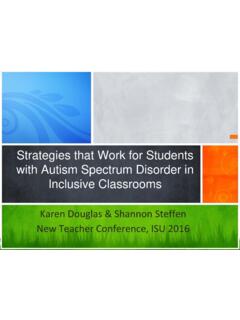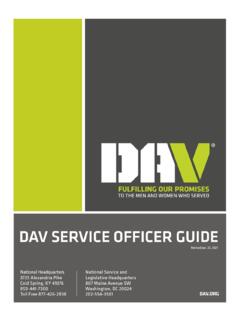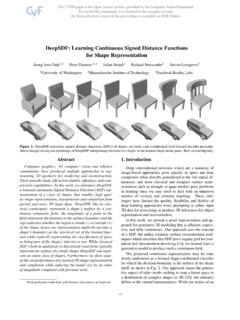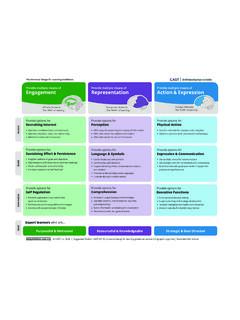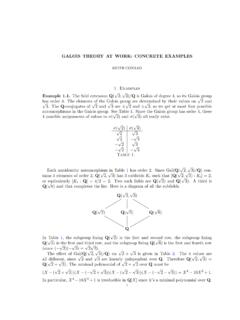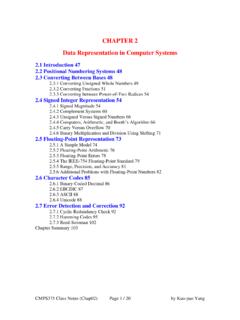Transcription of Cultural Diversity at Work: The Effects of Diversity ...
1 Cultural Diversity at work : The Effects of Diversity Perspectives on work GroupProcesses and OutcomesRobin J. Ely; David A. ThomasAdministrative Science Quarterly, Vol. 46, No. 2. (Jun., 2001), pp. URL: Science Quarterlyis currently published by Johnson Graduate School of Management, Cornell use of the JSTOR archive indicates your acceptance of JSTOR's Terms and Conditions of Use, available JSTOR's Terms and Conditions of Use provides, in part, that unless you have obtainedprior permission, you may not download an entire issue of a journal or multiple copies of articles, and you may use content inthe JSTOR archive only for your personal, non-commercial contact the publisher regarding any further use of this work .
2 Publisher contact information may be obtained copy of any part of a JSTOR transmission must contain the same copyright notice that appears on the screen or printedpage of such JSTOR Archive is a trusted digital repository providing for long-term preservation and access to leading academicjournals and scholarly literature from around the world. The Archive is supported by libraries, scholarly societies, publishers,and foundations. It is an initiative of JSTOR, a not-for-profit organization with a mission to help the scholarly community takeadvantage of advances in technology. For more information regarding JSTOR, please contact Nov 1 12:44:24 2007 Cultural Diversity at work : The Effects of Diversity Perspectives on work Group Processes and Outcomes Robin J.
3 Ely and David A. Thomas Harvard University O 2001 by Cornell University. 0001 -8392101 14602-0229/$ . The order of authorship bears no relation to the authors' relative contribution to the ideas in this paper; they produced the ideas in full collaboration. This research was funded by grants from the Ford Foundation and the Harvard Business School Division of Research. We are grateful to our colleagues in the FSC Research Group-Elaine Backman, Herminia Ibarra, Maureen Scully, and Kathleen Valley-for helpful comments on earlier drafts of this paper. We also thank Pamela Ellis, Russell Peace, Dalia Radley- Kingsley, and Rose Miller for their assistance with data collection.
4 Finally, we thank Linda Johanson, Rod Kramer, Joe Porac, and the anonymous ASQ reviewers for their helpful comments and suggestions. This paper develops theory about the conditions under which Cultural Diversity enhances or detracts from work group functioning. From qualitative research in three cul- turally diverse organizations, we identified three different perspectives on workforce Diversity : the integration-and- learning perspective, the access-and-legitimacy perspec- tive, and the discrimination-and-fairness perspective. The perspective on Diversity a work group held influenced how people expressed and managed tensions related to Diversity , whether those who had been traditionally underrepresented in the organization felt respected and valued by their colleagues, and how people interpreted the meaning of their racial identity at work .
5 These, in turn, had implications for how well the work group and its members functioned. All three perspectives on diversi- ty had been successful in motivating managers to diversi- fy their staffs, but only the integration-and-learning per- spective provided the rationale and guidance needed to achieve sustained benefits from Diversity . By identifying the conditions that intervene between the demographic composition of a work group and its functioning, our research helps to explain mixed results on the relation- ship between Cultural Diversity and work group out- American management literature, both popular ( , Thomas, 1991; Morrison, 1992) and scholarly ( , Jackson et al.)
6 , 1992; Cox, 1993), is rife with advice that managers should increase workforce Diversity to enhance work group effec- tiveness. Empirical research on whether and how Diversity is actually related to work group functioning is limited, however, and the evidence is mixed, depending in part on what kinds of differences constitute the " Diversity " in question (see Mil- liken and Martins, 1996; Pelled, 1996, for reviews). Researchers have examined the impact of Diversity in identity group memberships, such as race and sex ( , Cox, 1993; Jackson and Ruderman, 1995); organizational group member- ships, such as hierarchical position or organizational function ( , Bantel and Jackson, 1989; Ancona and Caldwell, 1992); and individual characteristics, such as idiosyncratic attitudes, values, and preferences ( , Hoffman, 1959; Meglino, Ravlin, and Adkins, 1989; Bochner and Hesketh, 1994).
7 Although certain types of Diversity appear to be beneficial, studies focused on race and gender have demonstrated both positive and negative outcomes (see Williams and O'Reilly, 1998, for review), suggesting that certain conditions may moderate these outcomes. To date, however, most scholars have only speculated as to what these conditions might be. As a result, consultants and managers interested in Diversity have had to rely largely on some combination of common sense and good faith for the rationales they advance about why and how companies should address the issue. We set out to develop theory, grounded in people's experi- ences in culturally diverse work groups, about the conditions under which Diversity enhances or detracts from work group functioning.
8 From our research, we identified three different perspectives on workforce Diversity that people embrace, each with different implications for a work group's ability to realize the benefits of its Cultural Diversity . We use these 229lAdministrative Science Quarterly, 46 (2001): 229-273 observations here to examine critically some of the themes and basic assumptions of previous research and to propose new directions for both researchers and practitioners inter- ested in Diversity . Diversity is a characteristic of groups of two or more people and typically refers to demographic differences of one sort or another among group members (McGrath, Berdahl, and Arrow, 1995).
9 Researchers have generated numerous dimen- sions for classifying demographic differences, often positing different outcomes for people and work groups, depending on the degree and nature of those differences. Pelled (1 996) made one set of predictions about the impact of racial diver- sity among group members and another about the impact of functional background Diversity , based on the visibility of race and the job-relatedness of functional background. Others have distinguished among the Effects of Diversity depending on whether differences are Cultural (Cox, 1993; Larkey, 1996), physical (Strangor et al.)
10 , 1992), inherent and immutable (Maznevski, 1994), or role-related (Maznevski, 1994; Pelled, 1996). Perhaps more importantly, researchers' predictions about any one Diversity variable differ depending on which of its dimen- sions they see as critical to determining its impact. Pelled (1 996) predicted that racial Diversity , as a source of visible dif- ferences, would incite intergroup bias and lead to negative outcomes for work groups, while Cox, Lobel, and McLeod (1991) predicted that racial Diversity , as a source of Cultural differences, would enhance creative problem solving and lead to positive outcomes for work groups.











